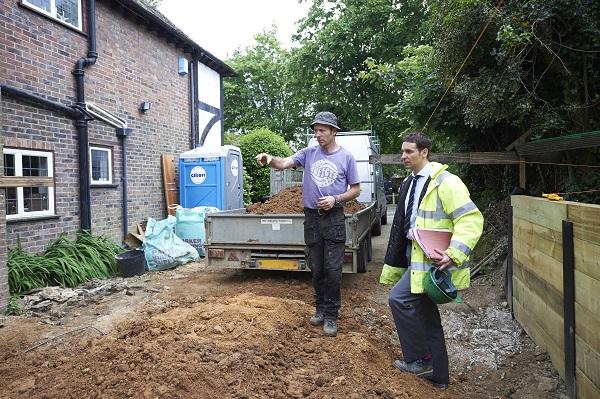How the CDM Regulations 2015 affect you
Did you know that you may now be ‘the principal designer’ and responsible for CDM on site? Hundreds of thousands of domestic building projects are now covered under the Construction (Design and Management) Regulations 2015 (CDM Regulations 2015) thanks to new changes that came into force in April 2015, replacing CDM 2007.
Although construction work by employed or self-employed people was always covered by the CDM 2007 Regulations, CDM 2015 broadens the client’s responsibilities and reinforces them by making them an absolute duty. On domestic projects the contractor must discharge the client’s duties as well as their own, therefore it is of great importance that you understand the new regulations.
The changes were brought about due to the high mortality rate on small sites - of the 44 deaths in 2012/13, around two in three happened on small sites - suggesting proper systems were not being put in place to lessen risk.
What you need to know about the CDM Regulations 2015
- A commercial client is responsible for the production of pre-construction information; the submission of the F10 notification where the project is notifiable to the HSE, and the checking of competencies of the project team. Where the client is domestic this is the responsibility of the contractor.
- The commercial client may still be helped with these duties by the new role of Principal Designer, which replaces the Coordinator role of the 2007 Regulations – however, the responsibilities of the commercial client cannot be delegated to a third party.
- Note that the commercial client may have someone else fulfill the duty, but the responsibility remains with them.
- On commercial projects, the new role of Principal Designer hopes to ensure that their early appointment in the project lifecycle addresses the principles of prevention that were often missed previously by not assigning a CDM Coordinator early enough in the project. These principles ensure that during the design, build, use, and demolition phases of the project’s lifecycle that all significant risks are either eliminated, reduced or controlled.
- On a domestic project, the client may appoint the designer (in writing) to manage the health and safety coordination. If not then the responsibility falls to the contractor.
- Where the CDM Coordinator was previously appointed due to the length of the project’s construction programme, the new role of Principal Designer or Principal Contractor is engaged when there are two or more contractors on the project.
- The Principal Designer also has a duty to start the health and safety file at the beginning of the project, transferring the file over to the Principal Contractor at the start of their construction phase.
- You should note that in addition to your duties as a contractor if no Principal Designer exists then the clients' responsibilities may fall onto you, and if you are co-ordinating other contractors you become a ‘Principal Contractor’ with additional duties.
- Also in the new Regulations are a number of potential hazards that may be found during construction which, if foreseeable on the project, must have clearly defined measures to deal with the risks.
You can find out more about the changes by downloading the HSE’s Managing health and safety in construction guide.
Sign up to the building bulletin newsletter
Over 48,000 construction professionals have already signed up for the LABC Building Bulletin.
Join them and receive useful tips, practical technical information and industry news by email once every 6 weeks.
Subscribe to the Building Bulletin




Comments
Advice and training?
Submitted 5 years 7 months ago
Can the LABC provide any advice or training specific to BCO's in the skills, knowledge and experience we need to obtain to ensure that we comply with the new CDM Regs when dealing with a dangerous structure?
Roles misleading
Submitted 5 years 7 months ago
The role of the Principal Designer in the pre-construction phase is undertaken by the lead designer as default when not appointed by a domestic client (Regulation 7.2.a).
The controlling contractor takes over the construction phase of the project as Principal Contractor (Regulation 7.2.b).
Inaccurate
Submitted 5 years 7 months ago
Template?
Submitted 5 years 7 months ago
Principal
Submitted 5 years 7 months ago
Reply
Submitted 5 years 7 months ago
In addition to the HSE website another good source of reference regarding the CDM 2015 Regulations can be found at www.citb.co.uk this website includes various industry guidance documents, videos and a Wizard App together with access to various training courses on CDM via the CITB. LABC already run a dangerous structures training course, there are no immediate plans to run a specific CDM course but we will review the content of the existing course to ensure that it remains up to date with the CDM 2015 regulations.
Cathal Brennan
LABC
I agree
Submitted 5 years 7 months ago
Thanks
Submitted 5 years 7 months ago
Webmaster note
Submitted 5 years 7 months ago
Update please
Submitted 5 years 2 months ago
Add new comment